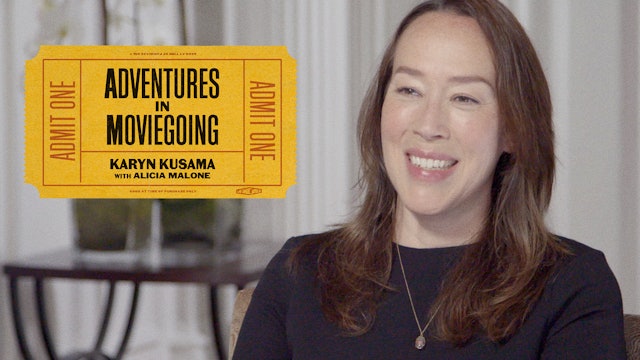Girlfight: Taking by Storm

It’s as memorable a protagonist introduction as you can imagine: teenage bodies crisscrossing high-school halls in slow motion, rushing off to class; behind them, a young woman canted against a bank of red lockers, a backpack slung over one shoulder. Her stance is wide, her clothes oversize, her hands shoved so deeply in her pockets that we can’t see them at all. A tighter shot follows. She couldn’t be any more still, or any more different from the others—a stone in an eddying stream. The shot changes: her head, lined with cornrows, is tilted down toward the floor. In the next shot—even closer in—she lifts her gaze, and only her gaze, to meet ours. She is not looking at us, until she is.
It’s a confrontational shot across the bow: our first encounter with Diana Guzman and the actress who plays her, Michelle Rodriguez, here making her smoldering debut. From this point on, Karyn Kusama’s Girlfight (2000) is Rodriguez’s movie; we’re just along for the ride. Two and a half minutes in, she’s whaling on a mean girl who insulted her friend, before being dragged off and sent to the principal’s office. It’s a traditional high-school movie setup: one more fight, her principal says, and she’ll be expelled. But instead of being compelled to tutor other kids or join the school play or perform community service, she finds herself at the local boxing gym, where her cold father (Paul Calderon) has been paying for her gentle kid brother, Tiny (Ray Santiago), to take lessons from a skeptical, washed-up former boxer, Hector (Jaime Tirelli). When she asks Hector to train her, he affirms her interest—it is, he says, a great workout. Another man suggests she try aerobics. “No, for real,” she counters. “I want to fight.”
Tiny doesn’t want to fight; he wants to go to art school. And Diana needs an outlet for her rage. But when she asks her father for the same amount of money—intending to use it for the same lessons, in secret—he refuses. It’s unfair, but a familiar expression of machismo: her father pours resources into a son who doesn’t want them while ignoring the daughter who needs them. But her father’s indifference to her is only a brief hurdle: Diana steals his money, pawns a locket with her mother’s photo inside, and begins her boxing journey. The abstractions of bildungsroman solidify into embodiment. In a world where women are incentivized, or forced, to abandon control of their bodies—to capitalism, to the patriarchy, to the state—it is isolating and dangerous to refuse to do so. And yet she does, without hesitation. The ring “is a lonely place,” Hector warns her, but Diana is used to her loneliness.
When Girlfight first hit theaters, Kusama told the New York Times that it was her own foray into boxing at Brooklyn’s Gleason’s Gym, as an attempt to quit smoking, that inspired the film. There, she said, the sport’s mix of intimacy and violence—but violence with “decorum”—drew her in. Eighteen years later, in a Times profile, she talked in more detail and candor about this moment in her life. The time at Gleason’s was marked by grief: the death of a close friend and writing partner, followed a few years later by the death of her brother, both of heroin overdoses. Kusama’s communities were being ravaged by drugs and AIDS; death was everywhere. Around that time, according to the Times piece, “she began noticing young women on the subway who looked as angry as she felt.” This is the forge of Girlfight: trying to find a container for acute grief and loss and rage. Something, anything, to give a senseless world some sense. She wrote a first draft in under a month.








